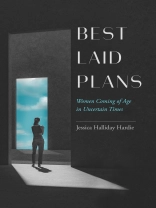Given the range of possibilities open to women today, what futures do adolescent girls dream of and pursue? And how do social class and race play into their trajectories? In asking young women about their aspirations in three areas—school, work, and family—
Best Laid Plans demonstrates how future plans are framed by notions of gendered responsibilities and abilities. Through her examination of the lives of poor, working-class, and middle-class Black and White young women as they navigate the transition to adulthood, sociologist Jessica Halliday Hardie defines anew what it means for young women to come of age. In particular, Hardie shows how social capital, either possessed or lacked, is not simply a resource for planning for the future but a structure whose form and function varies by social class and race. As these inequalities persist into adulthood, high aspirations, social capital, and careful planning bolster some young women while hindering others.
Drawing on qualitative data from a five-year period,
Best Laid Plans makes the case for why we need to move beyond the individual appeal to “dream bigger” and “plan better” and toward systematic changes that will put young people’s aspirations within reach.
表中的内容
Contents
List of Illustrations
Acknowledgments
Introduction
Part I Reconsidering Aspirations
1. High School Girls’ Plans
2. Anticipating a Packaged Future
3. Hoping for a Repackaged Future
Part II Traversing the Transition to Adulthood
4. Dreams Unfurled
5. On Track
6. Holding On
7. Navigating Rough Seas
Conclusion: Beyond Planfulness
Appendix: Methodology
Notes
References
Index
关于作者
Jessica Halliday Hardie is Associate Professor of Sociology at Hunter College and the Graduate Center, City University of New York, and faculty affiliate at the CUNY Institute for Demographic Research.












